From The Bottom of The Barrel #002 – Alien Quadrilogy archive DVD R1/R2 comparison review
Talk about this release on Slack
We’re back with another review from my time on the now defunct DVDDebate.com website, which was, at the time, one of leading sources of international DVD news and reviews.
This one is for the horribly named 2003 “Alien Quadrilogy” DVD box set release of the 4 Alien movies, with an absolute shitload of extras. One of the things that DVD Debate was best known for was its comparison reviews, pitting different releases of the same films against each other. This may include differences between regions, or an old release vs a new one. On this occasion I got my grubby mits on a review copy of the region 2 set, alongside my own region 1 import, which had arrived early, and spent the weekend before release diving in.
A quick note – In relation to comments about the audio on the extended cut of Alien 3, those issues were resolved on the subsequent Blu-ray release. Similarly, the edits to the Alien 3 documentaries were also restored for the Blu-ray. And remember, when looking at the comments on video and audio, bear in mind it’s all relative, and this was in the days before Blu-ray, so what looked good back then obviously wouldn’t stand a chance against more recent formats.
Right then. Grab a brew, this might take a while…
Studio: 20th Century Fox
Packaging: Digipack
Extras: Audio Commentaries, Documentaries, Photo Galleries, Art Galleries, Trailers
Aspect Ratios: Main Features: Anamorphic 1.85:1 & 2.35:1 NTSC, Extras: Non-anamorphic 4:3, 1.85:1 & 2.35:1
Sound: Dolby Digital 5.1 English, DTS 5.1 English, Dolby Digital 2.0 French
Subtitles: English
Directors: Features: Ridley Scott, James Cameron, David Fincher, Jean-Pierre Jeunet, Extras: Charles de Lauzirika
Release Date: Region 1: December 2nd 2003, Region 2: December 8th 2003
Rating/Certificate: US R / UK 18
Region: Region 1 & 2
“I admire its purity, its sense of survival; unclouded by conscience, remorse, or delusions of morality.”
Films
Alien
In deep space, the space tug Nostromo, owned by the Weyland Yutani Corporation , aka ‘The Company’, is on its long journey home, towing behind it a huge mineral refinery. Its 7 crew members are in a deep hypersleep. Suddenly, the silence of the vessel is interrupted as Mother, the ship’s computer, intercepts a transmission coming from a nearby planet, and awakens the crew. Following company protocol , the Nostromo detaches from the refinery and sets down on the surface to investigate. Here they find a huge derelict, apparently crashed, alien space craft, and inside, its dead pilot. Going below decks, Kane (John Hurt) discovers a huge chamber containing 1000s of eggs. One of the eggs opens, and, without warning, a creature jumps out and attaches itself to Kane’s face.
With the unconscious Kane, and his new friend, back on board, the Nostromo takes off and continues its journey. The ‘face hugger’ dies, and Kane soon makes an apparent full recovery, but as the crew relax over dinner, a new creature bursts from Kane and disappears into the bowels of the ship. Assuming that their prey is small, the crew set out to capture and kill it, but, unbeknownst to them, the alien is growing rapidly. As it starts picking them off one by one, the science officer, Ash (Ian Holm), is revealed to be an android under company orders to protect the creature, who are hoping to utilise its potential as a weapon for its military division. Warrant Officer Ripley (Sigourney Weaver) is left as the only survivor as she takes to the ‘life boat’, the Narcissus, and destroys the Nostromo and its refinery. With the creature finally destroyed, she goes back into hypersleep, and the Narcissus continues its course back to Earth.
Aliens
After 57 years in deep space, the Narcissus is intercepted by a salvage crew. Finding Ripley, they return her to Gateway Station, a huge space station in Earth’s orbit. Brought to account for the destruction of the Nostromo, Ripley is hauled before a disbelieving disciplinary panel to explain the events surrounding the death of the crew. The planet where the derelict was discovered, now dubbed LV-426, has now been inhabited, but when communications with the colonists is lost, the company start to believe Ripley’s version of events, and ask her to accompany a military investigative team to the planet, as a ‘technical advisor’. Once there, the over-confident marines soon find they are on more than a standard ‘bug hunt’, as they find the colonists all cocooned in a huge alien ‘nest’, apart from one orphaned girl, Newt (Carrie Henn), who has survived by hiding in the maze-like pipe work and ducting.
Following her experience with Ash, Ripley is distrustful of the marine’s android, Bishop (Lance Henriksen), but has more to worry about with Carter Burke (Paul Reiser), the company man along for the ride, who once again want to explore the alien’s use as a bio-weapon. After an attack which kills their sergeant, the marines, now under the leadership of Corporal Hicks (Michael Biehn), quickly realise what a good idea it would be to listen to Ripley’s advice, devise a plan to get off the planet and destroy the nest, along with the source of the eggs, the alien Queen. The battle won, back onboard their ship, the Sulaco, the survivors, Ripley, Hicks, Newt and Bishop, prepare for the journey home. However, the alien Queen has hitched a lift from the planet on their ‘drop ship’ shuttle craft, and following a last ditch one-on-one fight between Ripley, in an armoured ‘power loader’ exo suit, and the Queen, the crew finally go back into hypersleep, and head home.
Alien 3
As the Sulaco drifts through space on its long journey back to Earth, it appears that the alien Queen has left a nasty surprise onboard, in the form of an egg. As the face hugger attacks one of the cryotubes, broken glass cuts its skin, and its acid blood burns through the flooring of the ship and starts an electrical fire. The ship’s automatic systems activate, and jettison the still sleeping crew into an emergency escape vehicle (EEV) and off into space. The EEV crash lands on the nearby Fury 161, former mining colony turned prison planet, where the few remaining inmates forge lead sheets for waste containers.
Ripley wakes to the news that Hicks and Newt died in the crash, but suspects a more sinister cause. Following a couple of mysterious deaths, Ripley recovers the remains of Bishop from a rubbish tip and gets him to decode the flight recorder from the EEV. Her worst fears are confirmed as Bishop tells her that not only did a face hugger crash with them on the EEV, but that the company knows about it, and are sending a team not to kill the alien, but to once again attempt to capture it. As the prisoners attempt in vain to kill the creature, Ripley makes the shocking discovery that the alien will not kill her, as she has a Queen growing inside her. Using themselves as bait, the remaining prisoners lure the alien into the lead foundry, where they finally douse it in molten metal, and kill it. The ‘rescue’ team arrives, led by the human who designed Bishop, and try to convince Ripley to let them remove the Queen and destroy it. Despite their persuasions, Ripley knows that she cannot trust them, and realises the only way she can be sure that the alien is destroyed is to kill herself.
Alien Resurrection
Over 200 years after the events on Fury 161, the Weyland Yutani Corporation no longer exists. In its place is the United Systems Military, and onboard their research vessel, the Auriga, scientists have finally succeeded where their predecessors had failed. By using a sample of Ripley’s DNA taken from the EEV medical scanner on Fury, they have been able to clone her, and the alien Queen embryo that she was carrying inside. Following some failures, Ripley Clone #8 is a complete success, and they now have not only a Queen, but are breeding the warrior aliens, still in the hope of producing the ultimate biological weapon. What the scientists didn’t expect were the side-effects of the cloning process, which results in the aliens absorbing some human intelligence and cunning, with Ripley #8 showing signs of heightened strength and agility.
Into this situation arrives the crew of a cargo ship, the Betty, a group of smugglers making a living from illicit trades and shipments. Their shipment this time is kidnapped humans, deep in hypersleep, who are to be used as hosts for the newly breeding aliens. The Betty’s captain, Elgyn (Michael Wincott), is an ask-no-questions kind of guy, and doesn’t care, or want to know, what his shipment will be used for, as long as he gets his payment. However, when the new, improved aliens break free, his team has to join forces with the crew of the Auriga, and Ripley #8, whose line of allegiance between the humans and the aliens, appears to be extremely blurred.
Each of the films in the Alien series has its own unique look and feel, and it’s a credit to Fox that they took gambles on new or unproven directors. For Ridley Scott, at that time an acclaimed commercials director, Alien was his second film, following the historical drama, The Duelists. Scott wanted to move away from the high sheen and gloss of sci-fi movies like 2001, towards a more grungy and realistic feel, more accurately depicting the look and atmosphere of ‘truckers in space’. His ideas were obviously taken on board, as on the strength of his self-drawn storyboards alone, Fox doubled the film’s budget.
For Aliens, Fox hired James Cameron, who, at the time, had only Piranha II: The Spawning and the unfilmed Terminator script to his name. On the strength of the Terminator, the producers took a chance, and were even willing to wait until that film was complete before continuing work with Cameron. Cameron brought his love of the high-tech and the military to the screen, as Ripley and the marines wage an all-out war on the aliens.
David Fincher was brought on board extremely late in the day for Alien 3, his feature debut, without a completed script or the backing he needed. Despite this, Alien 3 is a visually stunning piece of work that, whatever its weaknesses, cannot fail to impress as a remarkably assured first film, as Fincher creates one fantastic image after another.
Although he had two acclaimed films on his resume in his native France, Alien Resurrection was Jean-Pierre Jeunet’s first American film. Bringing with him a trusted team from France, including cinematographer Darius Khondji, effects supervisor Pitof, and his former co-director Marc Caro as conceptual artist, Jeunet creates a truly art-house entry in the series. Using wild camera moves, striking production and costume design, and some glorious photography, Alien Resurrection is even more visually striking than Alien 3, and though at times it does border on self parody, it is a flawed, though interesting, finale to the saga.
Throughout all 4 films, the casting is uniformly excellent. With world renowned actors like John Hurt, Ian Holm, Harry Dean Stanton, Bill Paxton, Michael Biehn, Charles Dance, Paul McGann, Brad Dourif and more, I think it’s safe to say that, no matter how brief the role, there is not one single bad performance in the whole series. Of course, the series rests on the shoulders of Sigourney Weaver, and with each film, the character of Ripley has evolved naturally, while never forgetting or betraying what had gone before. While all her performances have been outstanding (Weaver was nominated for an Oscar for her work in Aliens), the film she appears to have most fun in is Alien Resurrection, as she visibly lets rip in her role as a human/alien hybrid.
An Alien movie would not be complete with the creature itself, as designed by H.R. Giger. Although less involved with the sequels, his immediately recognisable design has remained largely unchanged, with little tweaks here and there. Even the James Cameron designed alien Queen shows many influences from the original concept. As technology has moved on, the creature has gone from a man in a suit, to miniature puppets, to a full CGI creation, but has never strayed too far from the elements that made it such a success in the first place.
Normally, as you may well be aware by now, I can be an opinionated git, but on this occasion I’m not going to spend time arguing over which is the best movie, because, firstly, everyone has their own favourite (for the record, mine is Alien 3), and, secondly, I believe the Alien movies have been analysed, reviewed and dissected to death. Whichever is your preference, there is nothing here that is likely to make you change your mind, but the extras, discussed further on, may at least increase your appreciation for those chapters that you had perhaps dismissed in the past.
Video
Although they received the THX seal of approval for their previous release in the Alien Legacy box set, this time all 4 movies are presented in their respective theatrical and alternate editions (discussed in the extras section), and so get another THX polish for this release, with mixed results.
Alien
Alien has had a complete restoration, supervised by Ridley Scott, and looks magnificent. You would never know that this movie is over 20 years old, as this transfer puts many modern releases to shame. The previous release was very good indeed, but this one just nudges it off the top spot. Detail levels are increased slightly, showing off even more of the magnificent set design. Everything bursts off the screen, from console buttons, clothes and fabric, rusting equipment and more. Contrast levels are superb, allowing the finest detail to be visible in even the darkest of shadows.
Talking of shadows, this transfer does appear slightly darker in places than the previous one, but this works to the film’s advantage. Ridley Scott truly does paint with shadows, and the stronger black levels help increase the tension as you are almost made to strain to see what is lurking in the dark. As the ‘Director’s Cut’ footage intercuts with the original film, the difference is barely perceptible, with the image only occasionally softening fractionally. Only occasional pixelation and colour banding artefacts, over the ever-troublesome gradient and smoke filled back grounds, stop this transfer being reference quality.
Aliens
I’m sorry to say that Aliens, considered by many as the best in the series, gets the worst transfer. First, the good points. Colour reproduction and detail levels are very good over all, helping to bring out the finer points not visible on the previous release. One sequence of the film takes place bathed in a deep red light, but the transfer never once allows the colour to slip or bleed. Considering that reds are often the first colours to show up a transfer’s weaknesses, this is very impressive.
Now the bad news. Before I go on, I know from owning this film on tape, LaserDisc and its previous DVD, that Aliens has always been quite a grainy film, due, I believe, to the film stock used to shoot in the low light conditions of the ‘nest’ sets. Unfortunately, it appears that in order to reduce the grain in this transfer, too much digital processing/noise reduction (call it what you will) has been applied, resulting in some pretty nasty compression artifacts during the darker scenes. As well as pixelation and blocking, we get quite a few instances of smearing during camera pans, or shots of moving objects. In addition, while during lighter scenes detail is quite high, when the light drops, the image softens considerably. While I can appreciate that much of this may be down to the source materials used, personally I would have preferred the more stylistically appropriate graininess, rather than this level of image processing. It’s by no means a bad transfer, but when compared to the other discs in this set, it’s a real let down. As with Alien, the extra footage in the ‘Special Edition’ cut is virtually indistinguishable in quality than that from the original cut.
Alien 3
Things start to look up again with Alien 3. With a predominantly sepia tone palette, the range of colours that require reproduction is limited. However, this transfer does them justice, with lush, deep browns and flaming reds and oranges, along with the stark greys of the prison facility’s mess halls. Detail is high, and the strong contrast and deep blacks work again, as with Alien, to heighten the tension, as something nasty lurks round every corner. Despite the intentional grungy and grimy feel to the film, details are never lost in the murk, and while the previous Legacy transfer was pretty good, this one has a definite edge.
Plenty of smoke and steam is used in Alien 3, and this is usually one area where DVD transfers suffer, often unable to reproduce the fine gradients of shade and colour to be found in the billowing clouds. Alien 3 is no exception, and there are a few occasions of pixelation, though, all things considered, not as many as I had expected. The one thing about this transfer that really impresses is the quality of the restored footage in the ‘Special Edition’ cut of the movie. For many years, the only way to see this fabled, long-lost version of Alien 3 was low quality, video tape bootleg ‘work print’ cut, which hardly showed the footage in its best light. It’s therefore a revelation to see it here, restored seamlessly, and virtually indistinguishable, into this new cut. Only on a couple of occasions does the image exhibit some slight softness or lack of detail, while the rest of the time it matches the existing footage perfectly.
Alien Resurrection
Being the most recent release, you would hope that Alien Resurrection would get a good transfer, and you wouldn’t be disappointed. Going even further into the brown and orange colour scheme than Fincher, Jeunet and Khondji craft a visually stunning film, reproduced superbly here. Strong, deep blacks and superb contrast levels allow for some superb shots that are composed as much with what you can’t see as with what you can. Detail levels are very good, though not perfect, again showing off all the sets and models to their full potential.
Alien Resurrection was the first of the series to extensively use CGI in its special effects (Alien 3 had a couple of digitally composited effects shots, and some very sparing use of CGI), and they are integrated with the background photography extremely well. Again, smoke and subtle colours suffer from a degree of blocking, but nothing too bad.
What’s most impressive about these releases, regardless of their individual transfers, is how well the footage in the alternate cuts matches that in the originals. For Aliens, which has been available in its extended version for over 10 years, this has always been the case, but for the other 3 films, I was very impressed at the consistent quality between the different footage.
Despite the slightly higher resolution of PAL over NTSC, The Region 1 and Region 2 transfers are pretty much indistinguishable from each other, displaying the same strengths and weaknesses. Definitely a draw in the image department.
Audio
All 4 movies get superb soundtracks, with only Alien 3 providing an occasional, sadly unavoidable, exception.
Alien
Alien is available with either a 5.1 Dolby Digital track, encoded at 448Kbps, or a 768Kbps DTS track. Both tracks are very impressive. Alien is not a slam-bang action movie, and so wild directional effects will not be found here. However, the surround channels are used very effectively for atmospheric effect. Whether it’s the wind howling round your room on the alien planet, or water dripping over your shoulder as Brett goes searching for the cat, this soundtrack compliments the creepy visuals perfectly. The semi-improvised dialogue is always clear, even as the cast mutter many of there lines almost under their breath, while Jerry Goldsmith’s score is very faithfully reproduced. The DTS track, as is often the case, sounds a fraction smoother and fuller in places, but to be honest there’s hardly anything in it between that and the Dolby Digital track.
Aliens
Whilst Alien’s soundtrack is an exercise in restraint and quiet unease, the listening its sequel’s offering is like putting your head in a speaker at a Napalm Death concert. This isn’t a complaint at all, as the lack of subtlety perfectly matches the militaristic tone of the movie. The mainly percussive score, with huge, deep bass drums and crashing symbols and pipes, accompanies the sound effects with bombastic abandon. Due to space limitations caused by the amount of extra footage, we only get a 448Kbps 5.1 Dolby Digital track here, but it’s nevertheless pretty impressive. The track is mainly front based, but the surrounds come alive during the action sequences, though directionality and stereo separation in the rear channels is pretty basic; instead, most of the time, we get a general spread of noise more akin to what you might get to the mono surrounds on a Pro-Logic track. Dialog is clear and audible, even during the most hectic action, while bass – often from the score – is at times cavernous, though manages to avoid going over the top.
Alien 3
Again, due to space limitations, Alien 3 has to make do with a Dolby Digital track, encoded once more at 448Kbps. This is a very nice audio presentation, managing to reproduce the best elements of the the first 2 movies – the quiet, dread-filled atmosphere, with dripping water, hissing steam and echoing screams, along with the fast paced, powerful soundtrack. Both extremes are catered for here, with subtle ambient effects mixing with deep bass explosions, while never drowning out the dialog or the superb score. The soundtrack’s only weakness is with the audio in the restored footage. While fine on the whole, the dialog quality is quite poor in places. This is due to the fact that the footage was removed before the final cut was complete, meaning that dialog was never re-recorded, as is often the case in scenes filmed on noisy sets. In places this results in dialog being accompanied by the hiss of steam machines, drowned out by equipment, or, if the actor isn’t near a microphone, simply not being audible. We are helped out where needed by an optional subtitle track that fills in the gaps where needed, though, to be honest, the quality isn’t that bad, and the rest of the sound mix – music, effects and so on – carries on as normal.
Alien Resurrection
With Alien Resurrection, we go back to a much more lively soundtrack, complete with a 768Kbps DTS option, though, as with Alien, it is pretty closely matched with the Dolby Digital offering. Once more, this is a great mix of ambient atmosphere, with the constant rumble of the ship never far away, and dynamic action and effects as the aliens break loose and the bullets start flying. The score for Alien Resurrection, while not bad, is a bit bland, and certainly not a patch on the others, but is reproduced well, as is, again, the dialog. Produced more recently, Alien Resurrection takes full advantage of the multi channel audio that became available in the 90s (Alien 3 was produced in 1991/92 – the early days), and all 5 main channels are filled with noise. Dialog stays firmly routed to the centre channel, while ambient noise and directional effects stay lively throughout. The .1 channel is not over flowing with bass activity, but when it’s used, you will know about it.
As with the video, there’s really nothing in it between the two region releases, so the scores on the doors say 2 – 2
Extras
As you know, Alien Quadrilogy is a 9-Disc set, and with 5 discs purely devoted to extra features, plus additional features on each of movie discs, this, quite frankly, promises to shit all over the Lord Of The Rings Extended Editions. Can it live up to that promise, and do you miss anything buy choosing the Region 2 version over the Region 1? Read on to find out, as we examine the extras on the movie discs first.
Alternate Versions
Alien
Each movie gets its own alternate version. I will resist calling them ‘Director’s Cuts’, because, technically, in the sense of the director coming back to resolve things he was unhappy with in the theatrical version, none of them really are. As Ridley Scott says of Alien, he is more than happy with the 1979 version, and the scenes that were removed were cut for very good reasons. However, what he has done is restore some of the deleted scenes, including the famous ‘cocoon sequence’, whilst removing some footage from the original cut, resulting in a film that has approximately 5 minutes of new footage, but is just under a minute shorter than the theatrical cut.
The marketing of this version as a ‘Director’s Cut’ is Fox’s decision, not Scott’s. Over all the changes improve the film, helping the pacing and adding some nice new character moments. Ridley Scott has often said that the reason he cut out the cocoon sequence, was that it stopped the film dead in its tracks during Ripley’s frantic escape, and I would tend to agree with him.
Aliens
If you are going to be picky, you might argue that the theatrical cut of Aliens would be classed as the alternate version, as this is the first time it has been released on DVD. The Special Edition version is again not a director’s cut, but rather ‘the best possible version of the film in the absence of time constraints’. While not the first of its type, the Aliens Special Edition, first released in the early 90s, is the film that really made the release of extended versions and directors’ cuts on home video take off.
The concept soon became a staple of the LaserDisc market, and then DVD. Now we almost feel cheated if we don’t get something extra in our home cinema fodder. The Special Edition adds a decent amount to the theatrical cut in terms of action, but more importantly character, as we learn that Ripley had a daughter who, while she was in space for nearly 60 years, has since died. This helps to reinforce her relationship with the orphaned Newt later on in the movie, and makes the girl’s death in Alien 3 even more powerful. The Special Edition is certainly the version to watch here.
Alien 3
Whatever your thoughts on the third Alien film, I feel pretty certain in saying that this is the one feature that most people will check out first. This is most definitely not a director’s cut (then again, neither was the theatrical version). What we have here is a reconstructed ‘assembly cut’ of Alien 3. Basically, an assembly cut is an early edit of the film, and quite often features incomplete special effects, and poor quality on-set dialog. What is does do, though, is give a sense of the structure and pacing of a film, and can often be used to decide whether any more footage needs to be shot, either to add to, or replace, what already exists.
In Alien 3’s case, of course, huge significant amounts of film was both re-shot and cut from the theatrical release. While Fincher was asked, if not begged, to come back and supervise a true ‘Director’s Cut’ of his debut film, he declined; perhaps not surprising when one finds out how badly he was treated. Instead, Quadrilogy producer Charles de Lauzirika and his team have worked from scripts and production and editing notes to reconstruct, as closely as possible, the “assembly cut” that Fincher presented to Fox before control of the film was effectively taken away from him. The missing footage was found and cleaned up, with new visual effects completed where necessary, although the dialog sound quality, as mentioned, is variable.
The new version of Alien 3 is 30 minutes longer than the theatrical release, and features far too much new, as well as alternate, footage to go into in detail. However, major additions include a whole new opening sequence, where Ripley is found washed up on a beach, the infamous ox-burster replacing the previous version’s dog-burster, and a slightly altered ending. The most significant new footage is a whole subplot involving the prisoner Golic (Paul McGann), which includes a sequence showing the inmates capturing the alien, only to have Golic setting it free, believing it to be a dragon bringing judgment to the planet. Many smaller additions tell us more about the prisoners and their religious life, helping to answer back at those who criticised the film’s lack of characterisation. Be warned, however; this version does not contain everything that can be found in the bootleg ‘work print’ version of Alien 3, for reasons I am not sure of. This is a shame as there were a couple of nice moments in that version that are missed here. That said, this version is about as close as you will get to David Fincher’s vision, and for that we should be grateful.
Alien Resurrection
This 4th movie in the series has had just a couple of minor tweaks made. Once again, director Jeunet was happy with his 1997 cut, but Lauzirika and his crew have overseen the completion of both the original opening title sequence and an earth-bound epilogue, that were filmed against blue screens, but, due to budget constraints, never had their special effects finished. These are visually interesting additions, but add little to the story of the film, though a couple of other extra moments here and there are quite nice, including a scene where we learn the fate of Weyland Yutani – bought out by Wall Mart – and a scene where Ripley talks about Newt.
These alternate cuts show up the first differences between the Region 1 and Region 2 releases. The versions themselves are the same, but the options available with them differ. On the Region 1 discs, you can view an optional ‘deleted footage’ marker, which pops up whenever a new scene is playing. In addition, if you choose to view the theatrical version, you are still able to view the deleted footage from the theatrical cut’s ‘Supplements’ menu. Both of these options are missing from the Region 2 discs. In addition, the occasional subtitles that pop up during Aliens 3’s more difficult to hear new footage are also completely absent. Ok, so it’s not the end of the world, but I just can’t really see any good reason why such basic options should be missing.
Audio Commentaries
Alien
For Alien, we get a new commentary featuring Ridley Scott, Dan O’Bannon, Ronald Shusett, Terry Rawlings, Sigourney Weaver, Tom Skerritt, Veronica Cartwright, Harry Dean Stanton and John Hurt. As with all the commentaries on these discs, these are several sessions edited together. Here, for example, Ridley Scott’s chat is taken from both a solo recording and one he did with Weaver, while Cartwright, Stanton and Skerrit recorded their’s together. Despite its ‘bitty’ nature, it all hangs together quite well, and everyone involved has their say, though some more than others.
Aliens
Here we get another edited together commentary from James Cameron, Michael Biehn, Jenette Goldstein, Carrie Henn, Terry Henn, Lance Henriksen, Gale Anne Hurd, Pat McClung, Bill Paxton, Dennis Skotak, Robert Skotak and Stan Winston. Once again, this provides a good mix of both technical insight and on-set anecdotes, and it’s obvious that all those involved remain rightfully proud of the film.
Alien 3
Alex Thompson, Terry Rawlings, Alec Gillis, Tom Woodruff Jr., Richard Edlund, Lance Henriksen and Paul McGann provide the chatter for Alien 3, though with only two actors this time round, the talk is more technical, and a little drier. That said, the commentary remains interesting and does go into some detail about the troubles encountered when making the film, and all involved are unanimous in their praise for David Fincher.
Alien Resurrection
Rounding out the commentaries is this one featuring Jean Pierre Jeunet, Herve Schneid, Alec Gillis, Tom Woodruff Jr., Pitof, Sylvain Despretz, Ron Perlman, Dominique Pinon and Leland Orser. This is another good effort, as the mix of technical, creative and acting talent cover just about all aspects of the movie.
All of these commentaries are extremely good, and while they cover a lot of the same ground as the featurettes on the supplement discs, they are are never dull. However, and this is a BIG however, yet again the Region 2 disc comes up short. While the Region 1 disc allows you to listen to the commentary with either version of the film, on Region 2 the tracks are available only on the alternative cut of Aliens, and on the theatrical cuts of Alien, Alien 3 and Alien Resurrection. Maybe it’s just me, but that seems really spazzy, and more than a bit annoying. If you are a fan of commentaries, consider yourself warned.
So, with the movie discs out of the way, it’s on to the supplement discs.
Supplement Discs
Alien
The main meat of these discs are the documentaries. Alien gets things off to a great start with ‘The Beast Within: The Making Of Alien‘, broken down into the following sections:
- ‘Star Beast‘ – Developing the Alien story (18m12s)
- ‘The Visualists‘ – Direction and design (16m54)
- ‘Truckers In Space‘ – Casting (14m56)
- ‘Fear Of The Unknown‘ – Behind the scenes (24m06s)
- ‘The Darkest Reaches‘ – Developing the Nostromo and Alien planet (17m29s)
- ‘The Eight Passenger‘ – Creating the Alien (31m36s)
- ‘Future Tense‘ – Music and editing (16m24s)
- ‘Outward Bound‘ – Visual effects (19m13s)
- ‘A Nightmare Fulfilled‘ – Reaction to the film’s opening (23m24s)
These can be watched individually or all in one go. In addition, we also get the following:
- The Art of Alien including a cast portrait gallery, production gallery, the sets of Alien, H.R. Giger’s Workshop, continuity polaroids and VFX gallery
- Sigourney Weaver’s original screen test with optional commentary by Ridley Scott (5m45s)
- Seven deleted and extended scenes
- The first draft of the screenplay by Dan O’Bannon
- Ridleygrams – Original thumbnails and sketches by Ridley Scott
- Storyboard Archives
- A Multi-Angle Scene Study on the Chestburster sequence with optional commentary by Ridley Scott
- The original theatrical posters and stills from the premiere
There’s not really much left to say about all that really, except that if you plan to watch it all in one go, make sure you have plenty of free time. All that little little lot lasts well over 3 hours, and by the end of it there’s nothing you won’t know about Alien. In fact, there’s quite a lot to say about all that… featuring a mix of both new and contemporaneous interviews with just about everyone involved, this leaves no stone unturned. We get to see Giger at work in his workshop, Carlo Rambaldi’s original sketches for the Alien head’s internal mechanism, footage of the original Kane, John Finch (who was replaced due to illness after just one day), and the list goes on.
Hands down, this is one of the best documentaries I have had the pleasure of wading my way through. You get tons of onset footage that’s never been seen before, along with alternate takes and angles from dozens of familiar scenes, abandoned model and effects shots and more. The chestburster deconstruction is a hoot, as we get footage from the two cameras filming the scene, along with Ridley Scott’s enthusiastic direction to the operator lying under the table, as Veronica Cartwright gets a face full of blood and guts – ‘And again, Nick, and again! Ram it out, ram it out!’. The screen test shows a very young, and extremely nervous looking, Sigourney Weaver, who, even at that stage, fitted the part perfectly, while the deleted scenes are the last few that Ridley Scott left out of his new cut. Some of these are in pristine condition, as they were to be included in the new version but were taken back out at the last minute, while some are a little rougher round the edges.
Aliens
Once you’ve recovered from watching the Alien features, you will no doubt want to to check out ‘Superior Firepower – The Making Of Aliens‘, which consists of:
- ‘57 Years Later‘ – Continuing the saga (11m02s)
- ‘Building Better Worlds‘ – From concept to construction (13m28s)
- ‘Preparing For Battle‘ – Casting and characterization (17m02s)
- ‘This Time It’s War‘ – Behind The Scenes (19m40s)
- ‘The Risk Always Lives‘ – Weapons and action (15m13s)
- ‘Bug Hunt‘ – Creature design (16m26s)
- ‘Beauty And The Bitch‘ – Power Loader vs. Queen Alien (22m27s)
- ‘Two Orphans‘ – Sigourney Weaver And Carrie Henn (13m48s)
- ‘The Final Countdown‘ – Music, Editing and Sound (15m31s)
- ‘The Power Of Real Tech‘ – Visual Effects (26m17s)
- ‘Aliens Unleashed‘ – Reaction to the film (12m32s)
Once again these can be watched all together or accessed individually, and are accompanied by the following:
- The Art of Aliens including conceptual art portfolio, cast portraits, production gallery, continuity polaroids, Stan Winston’s workshop, VFX gallery and premiere stills
- Deleted footage marker and deleted scene index
- Multi-angle videomatics with optional commentary by Miniature Effect Supervisor, Pat McClung
I found this disc even more interesting than the Alien one. The story of Alien has been told many more times, with its previous DVD commentary, the Alien Legacy disc, the Channel 4 Alien Evolution documentary and more. Despite its fine LaserDisc release, and a few extras on the previous DVD, Aliens has never been explored to the same great depth. Well thankfully that all changes here. Whatever trials and tribulations David Fincher suffered on Alien 3, it seems Cameron had his fair share on this movie, with the sacking of his director of photography, to be replaced by Adrian Biddle, the sacking and re-hiring of his assistant director, and the replacement of the original Hicks, James Remar, accounting for just 3.
Throw in revolts and constant tea breaks by the English crew, fires and near poisoning of actors with toxic fumes, and out of control APCs, and you get the previously untold story of one of the most respected sci-fi and horror hits ever produced. Once again, all the main players are represented, in a mix of new and old interviews, covering all stages of the production. We get loads more alternate takes and out takes, behind the scenes footage and more. The sections dealing with the special effects are fun too, as we see the out takes of the model drop ship, hung on wires, gracefully sweeping over the colony complex, only to smack into a tower and then go wobbling off, out of shot. If you thought you knew every thing about Aliens, then think again.
Alien 3
As with its alternate cut, the Alien 3 documentary will be of most interest to many purchasers. This disc contains ‘The Making Of Alien 3‘, and is again viewable all in one go, or in the following separate featurettes:
- ‘Development‘ – Concluding the story (16m58s)
- ‘Tales Of The Wooden Planet‘ – Vincent Ward’s vision (13m11s)
- ‘Pre-Production Part III‘ (11m40s)
- ‘Xeno-Erotic‘ – H.R. Giger’s redesign of the Alien (10m20s)
- ‘Production Part I‘ (18m01s)
- ‘Adaptive Organism‘ – Creature design (20m32s)
- ‘Production Part II‘ (14m39s)
- Production Part III (8m53s)
- ‘Optical Fury‘ – Visual effects (23m18s)
- ‘Music, Editing And Sound‘ (14m51s)
- ‘Post-Mortem‘ – Reaction to the film (6m07s)
Once again, we get a few more accompanying bits and pieces:
- The Art of Alien 3 including conceptual art portfolio, production gallery, and visual effects
- E.E.V. Bio-Scan – Multi-angle study with optional commentary by Alex Gillis
- Furnace set construction time lapse (4m34s)
- Storyboard archives
Looking at the list above, you might be forgiven for thinking something is amiss. Maybe it’s the fact that this documentary is simply called ‘ The Making Of Alien 3‘. Maybe it’s that the featurettes look suspiciously short, and a few of them have pretty bland names. Your suspicions would be 100% correct. The original name for this disc was ‘Wreckage And Rape – The Making Of Alien 3‘, and a total of 30 minutes of footage has been edited out by Fox. In addition, the disc is credited to one Frederick Garvin, the Alan Smithee-esque name chosen by Charles de Lauzirika, who removed his own name from the credits after the scissor happy Fox suits had finished snipping away at his documentaries. How ironic, and sad, that over 10 years later, Fox are still unwilling to let the full story be told about this film.
I haven’t seen the original, uncut documentary, but my understanding is that most of the footage that was cut showed Fincher’s more extreme moments of on-set frustrations and conflicts. It’s perhaps understandable that Fox, who have since worked with Fincher again on Fight Club, may have wanted to avoid having him portrayed in a bad light, but it means that, in the absence of any new interviews with him, that footage is his only ‘voice’ on this disc. As such, much of the discussion here is quite one sided, especially from the producers and studio brass, though, to be fair, editor Terry Rawlings and the lead actors let their opinions be known in no uncertain terms..
Despite these criticisms, this is still a superb documentary, featuring interviews with early directors Renny Harlin and Vincent Ward, along with the producers and designers who worked on the film from the beginning. Much is made of Ward’s concept of a wooden planet, peopled by monks, but as one of the VFX crew rightfully pointed out, it was a nice idea, and wood have looked impressive, but made absolutely no sense. Undeterred, Fox soldiered on with a new – still incomplete – script, and David Fincher at the helm. The rest is movie history.
Once again, tons of onset and behind the scenes footage is presented, following all stages of production, including one particularly poignant sequence showing the original director of photography, Jordan Cronenweth, at work. At the time, Cronenweth – whom Fincher idolised – was showing increasingly severe signs of Parkinson’s Disease, and we see here how he was struggling to keep up with the pace and demands of production, and had to eventually be replaced by Alex Thompson, who graciously recalls hoping that he could match the quality of his predecessor’s work on the film. Even with the amount of footage removed, this piece still shows much of the onset tensions, and the actors and crew fill in the gaps. You definitely get the feeling, though, that the people who were at the top are not being 100% honest or open, which, after such a long time, is a real shame.
Alien Resurrection
The series draws to a close with ‘One Step Beyond: The Making of Alien Resurrection‘, which is made up of the following:
- ‘From The Ashes‘ – Reviving the story (10m04s)
- ‘French Twist‘ – Direction and design (26m07s)
- ‘Under The Skin‘ – Casting and characters (2m43s)
- ‘Death From Below‘ – Underwater photography (31m35s)
- ‘In The Zone‘ – Basketball scene (6m41s)
- ‘Unnatural Mutation‘ – Creature design (26m21s)
- ‘Genetic Composition‘ – Music (13m08s)
- ‘Virtual Alien‘ – Computer generated imagery (9m52s)
- ‘A Matter Of Scale‘ – Miniature photography (22m49s)
- ‘Critical Juncture‘ – Reaction to the film (14m26s)
In addition, we get the following:
- The Art of Alien Resurrection, including Mike Caro conceptual art, photo gallery, VFX gallery, a promotional photo archive and continuity polaroids
- Creature effects test footage (9m49s)
- Make up and movement test footage (4m39s)
- Multi angle rehearsal and previsualisation footage
- Storyboard archives
If your eyes can take any more staring at a TV screen, this is a fitting conclusion to the set. Once again, plenty of indepth discussions of the film and its development, from Joss Whedon’s first script, which producer Gordon Caroll thought would kill the series, to the simple question of ‘why bother?’, through to Jeunet’s surprise at being asked to direct.
It seems at least that Jeunet was free of the interference that plagued Alien 3, and, whether you like it or not, Resurrection is probably the most visually stylised movie of the series, and, based on his previous French films, immediately recognisable as his work. The director took the wise step of involving many of those who worked with him on past projects, allowing for both a consistency of style and the comfort of having some of his own country men working with him while in America.
The effects test footage is good fun, as we see videotaped tests of the face hugger, chest burster and alien effects, as well as the ‘Newborn’ alien seen at the end of the movie. Speaking of the newborn, the one thing that is a bit odd about this set of featurettes, is that, unlike the Alien 3 disc, where people are pretty open about the films failings, everyone here seems blissfully unaware of the derision that met the last half hour or so of the film. For me it’s pretty good fun until the ridiculous newborn arrives, and it seems most people are of a similar opinion. Here, though, it’s barely mentioned, while some of the design drawings shown during the interviews are infinitely better than the final version. That said, this is another fine way to spend a lazy few hours.
Taken together, these documentaries are, without doubt, the most in-depth look at this series you are ever likely to see. As to whether they rival the Lord Of The Rings Extended Editions in terms of content, I would say they definitely do. What makes them more impressive is that unlike the LOTR discs, which were planned from day one of shooting to be loaded with documentaries, this Alien set contains material over 20 years old, that has been found, dusted off, and presented here for all to see. In terms of effort alone, this set wipes its arse on The Lord Of The Rings Extended Editions, good though they undeniably are. The only shame is both the lack of involvement from David Fincher, and the editing out of his on-set footage from the Alien 3 featurettes. Thankfully, unlike the movie discs, content on the supplement discs is the same for both regions.
So, there you go. After almost a year of rumour and anticipation, that’s the Alien Quadrilogy finally released. Oh, hang on… what’s this?
Bonus Disc
Oh, Christ, not more! After all that lot, we get another disc full of stuff. Basically a dumping ground for everything that wouldn’t fit on the other discs:
- ‘Alien Evolution‘ – Channel 4 documentary on Alien (64m21s)
- ‘Experience in Terror‘ – 1979 Promotional featurette (7m08s)
- Q&A; with Ridley Scott (15m39)
- A complete laser disc archive of Alien and Aliens
- Trailers and TV spots from all four films
- ‘Aliens In The Basement‘ – Inside the Bob Burns collection (16m57s)
- Dark Horse cover gallery – 11 issues of the ALIEN comics
- DVD-ROM – Script to screen comparisons
All of this is good stuff. Alien Evolution, narrated by Mark Kermode, repeats a lot from the Alien supplement disc, but offers a good condensed version of events, and plenty of new interviews with the main players. The Ridley Scott Q&A; was recorded after a recent screening of the 1979 version of the movie, and, as always, he is a pleasure to listen to. Aliens in the Basement features Bob Burns, who, over the years, has built up a huge collection of Alien related props, all donated by the film makers, ranging from life size props, alien heads and face huggers, to miniatures like the Sulaco and the Narcissus. He even reveals that he has leant back several items for the sequels, including the Sulaco for use in Alien 3, and the full size Queen head for Resurrection.
The other feature of note is a reproduction of the complete LaserDisc archive from the old Alien and Aliens releases. Everything from those discs can be found here, and will take quite some time to get through. One feature, the script to screen comparisons, is not included on the Region 2 disc. The Alien Legacy documentary, from the previous box set release, is not included on either region, due to space restrictions on the disc. We can hardly grumble, as this set contains far, far more than was ever on that documentary.
As a final note, the menu designs differ slightly between the Region 1 and 2 discs. Nothing major, and one isn’t better than the other, but they are an ickle bit different.
That’s it. Really. Phew.
Summary
From the time it was first announced, to the flyer that was to be found in the X-Men 1.5 release in early 2003, the Alien Quadrilogy has attained almost legendary status, even before its release. A constant barrage of rumour, supposition, guesswork and plain old bullshit has rained down upon us, as Fox kept us in the dark about the final specifications of this set until recently.
The question of whether or not to buy it is a no-brainer. Fans of the series should not be without this set, while everyone else might as well buy it too, as this is undoubtedly the special edition by which all others will be judged.
As for which region to go for, that too is pretty clear. With both sets available for the same price, the Region 1 set offers far greater value, while the Region 2 has some annoying, and pointless, omissions. If you don’t have a multi-region DVD player, then this set is the only excuse you need to go get one. So, put this on your list for Crimble, and get your letter sent to Santa. Then on Christmas Day, lock the in-laws in the cellar, and make yourself comfy.


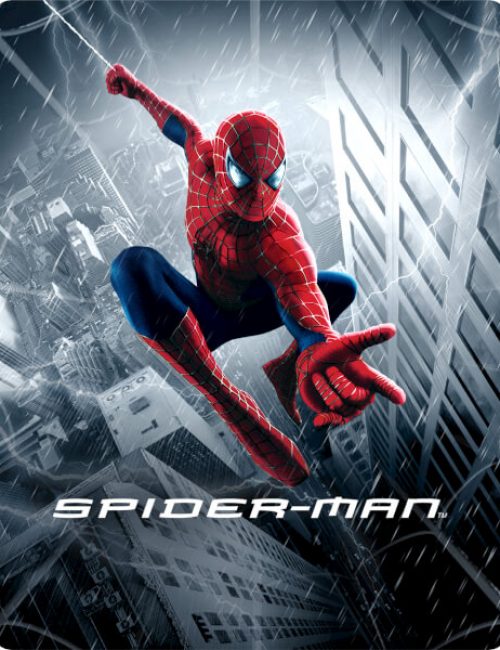
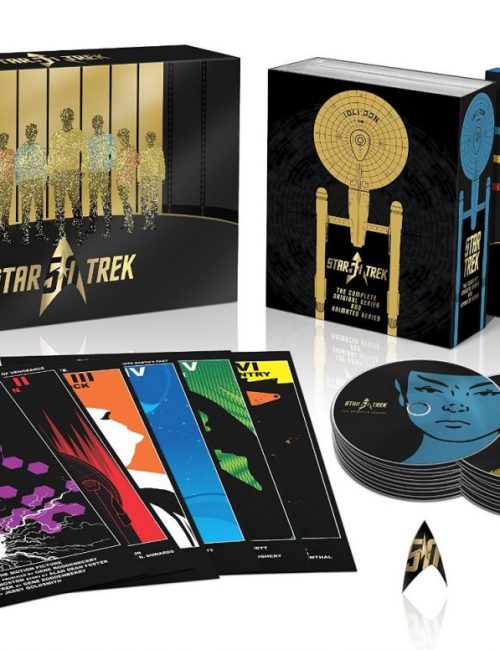
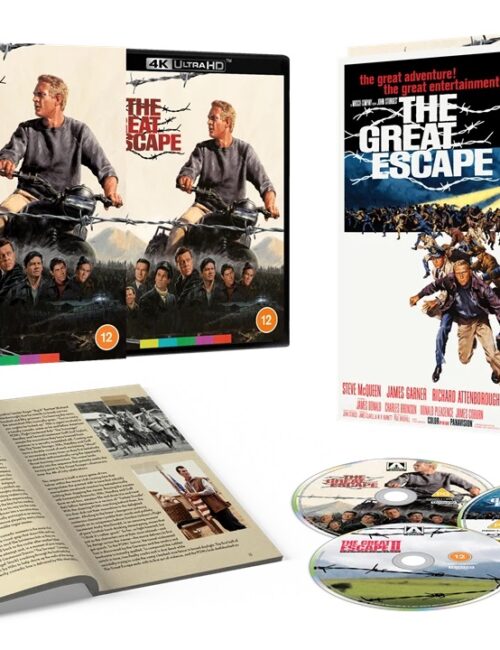











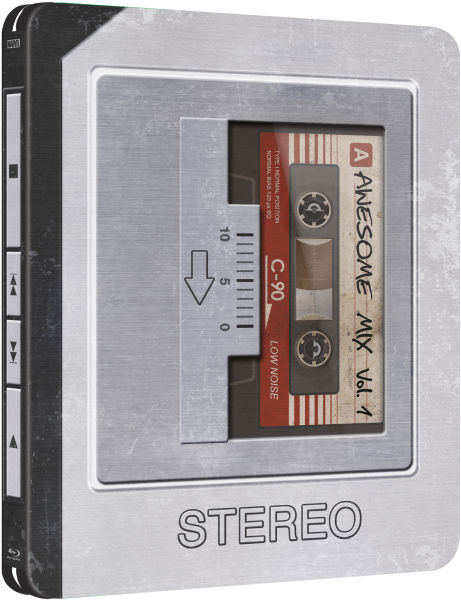



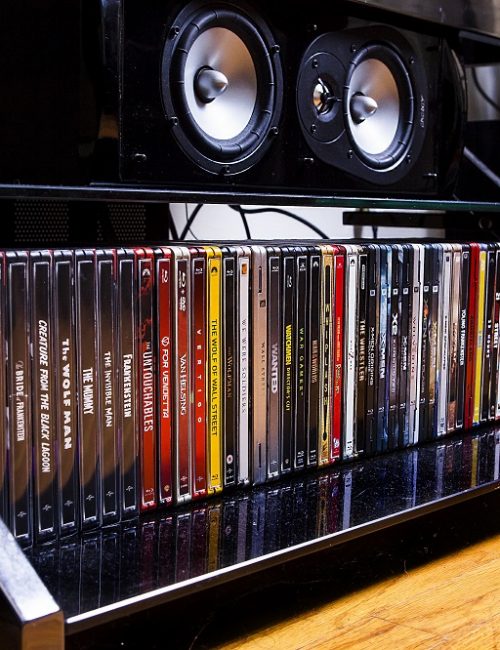
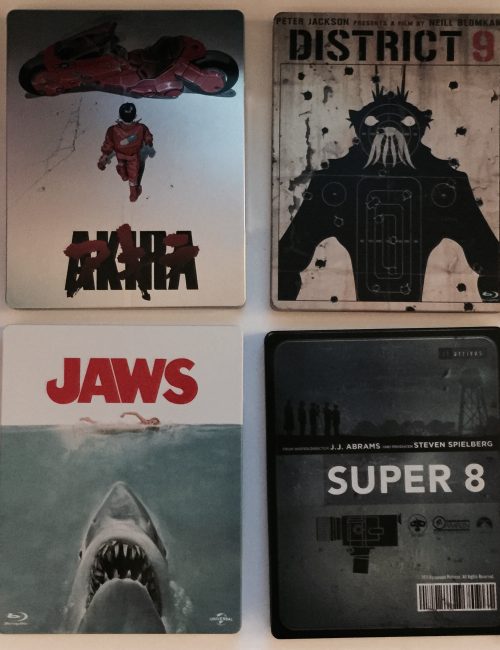
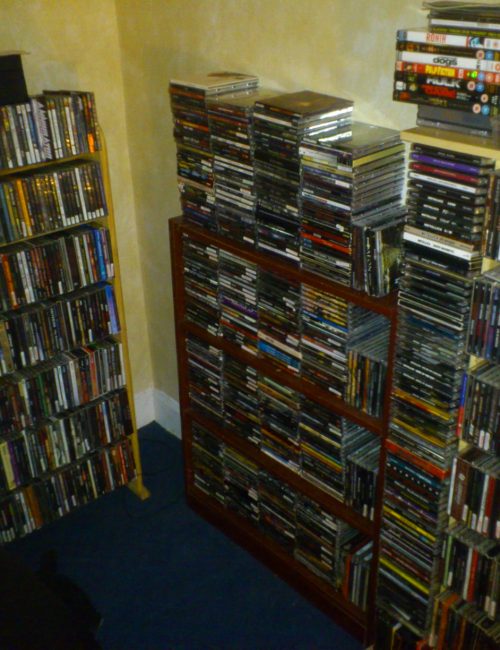
that’s an awful design, shouldn’t it be Tetralogy?
yep, terrible design. And when it got a Blu-ray upgrade they called it the Alien Anthology. much better 🙂
Jeff Brown Absolutely. The made up ‘Quadrilogy’ winds me right up when the suitable word already exists.
reminds me of this badge for Q the winged serpent